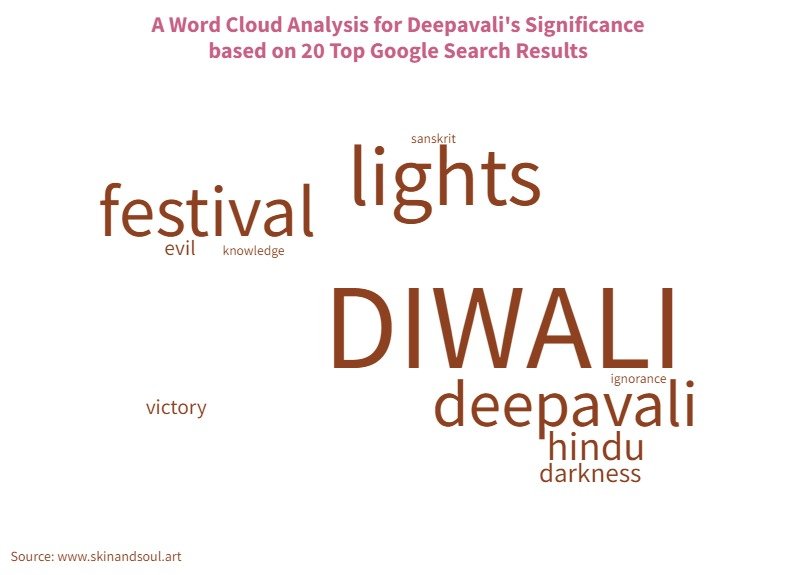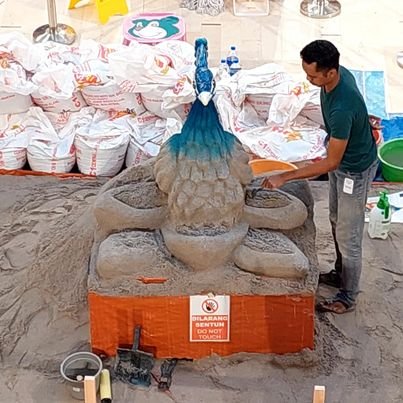Reclaiming Deepavali's Defeat on Darkness while Shining a Light on Malaysian Indian Cultural Sensitivity
அடி தேக்கு மர காடு பெருசுதான்…
சின்ன தீக்குச்சி உசரம் சிறுசுதான்…
ஒரு தீக்குச்சி விழுந்து புடிக்குதடி…
கருந்தேக்கு மரக்காடு வெடிக்குதடி
A jungle with teak trees is vast,
a matchstick is small in contrast.
Yet when lit, its flame so bright
can consume the forest in its might.
Who Holds the Narrative for Deepavali?
We often celebrate with the story of conquering darkness with light.
But we must question who perpetuates this idea, especially when diasporic Indians are often associated for being, dark-skinned in countries like Malaysia. Does this festive perpetuate colourism?
“Associating darkness with evil is one of the most devastating, violent uses of language that has perpetuated and upheld colonization, racism, casteism and colourism throughout the world.
These metaphors need to die.”
It is a blatant manipulation that has been appropriated and distorted to serve a capitalistic and racist agenda. I challenge the context of this celebration and ask: who is painting this delusional narrative?
If the narrative of Deepavali is continued to be shaped by those who have the most power and privilege in society, it will continue to reflect the values and perspectives of the dominant culture, rather than the values and perspectives of the Indian community as a whole.
“Decoding” Deepavali's Meaning According to Top Google Search Results
This pie chart below shows the countries of origin for the top 20 articles cited on Google search results for the query "Deepavali meaning."
55% of articles that define the meaning of Deepavali are owned by white countries, followed by India (20%), The remaining 25% of articles are from Singapore, Malaysia, Indonesia, and Qatar.
Only three of the writers were Indians while almost half of it did not have an author cited for the article.
This is problematic because if Google continues to index web articles that do not have culturally nuanced people who are writing it, then it continues to spread ignorance. Ironically defeating the purpose why this festive is celebrated for.
Deepavali Is A Tale As Old As Time Itself
Another common narrative of Deepavali is the return of Lord Rama to Ayodhya after 14 years of exile, defeating King Ravana of Lanka.
Ravana is said to have ten heads, each representing a virtuous ruler of his nation. In the Tamil-language epic film Raavanan, directed by Mani Ratnam and starring Vikram, Ravana is depicted as the lead protagonist. Otherwise, Ravana is often portrayed as the demon.
The film made RM30 million at the worldwide box office in 2010. A movie that provides a twist, that the dark guy can be the hero, the one fighting injustice.
We see Rama in the movie, who is fair-skinned, tidy, and well-groomed, and working for the government, the perpetrator. He has all the elements of a “good” guy, even though in time it is revealed that he speaks not a word of sincerity.
How Can You Help Us Reclaim The Celebration?
Start by listening to the collective voices of Indians themselves.
What do we want to see from the celebration of Deepavali? How can we make the celebration more inclusive and representative of the diversity of the Indian community? Once we have a better understanding of what Indians want, we can start to make changes to the celebration accordingly.
From my observation and experience, here are some basic things you can do to return the celebration to us.
Art Installation by Suhan Raj. Photos of the children were taken in the PPR* area and magnified to create a sense of belonging and empowerment in their area of residence to dream bigger. Vote for Suhan to win in Bakat Musa Sezaman ‘23.
*People's Housing Project (PPR) is an initiative by the Malaysian government to ensure that those from the low-income category are able to have homes.
1. Show Your Support & Solidarity
Boycott irrelevant and insensitive events held on or before Deepavali, such as book launches, creative festivals, and music events. During Raya, everyone leaves work two hours earlier for the entire month, and shops are closed for an entire week for Lunar New Year.
Please don't ask Indian creatives to leave their families on their festival day to be your token brown candidate. If your colleagues and peers are unaware of this, stand up to them and show your solidarity for us by telling the organizers that there are repercussions for intentionally not respecting the festivity of Hindu-Indians.
Instead, attend Deepavali bazaars to enjoy scrumptious sweets, luxurious, colorful saree materials, and a glimpse into the current lifestyle reality of the Indian community in Malaysia. Simply search online for these events near you!
Body painting art that I did with politician and dancer, Nalina Nair, photographed by Vicknes Waran in 2017 to protest cultural body policing.
This tip is inspired by Sunway University Press who went ahead to organize an event during the Indian festive weekend despite being told by the writers’ community who were celebrating Deepavali that they will balik kampung, thus excluding an entire community. After receiving several comments on their Facebook post, Sunway University Press changed the date.
This mishap could have been easily prevented if only they listened the first time.
2. Stretch the Timeline & Creative Freedom
The three dimensions of an artistic project are often creative freedom, budget, and deadline.
A job offer that squeezes all three is a death sentence for a creative. We understand that the allocation for Deepavali is often 3-15% of the budget allocated for other festivals like Hari Raya Aidiladha, Christmas, and Lunar New Year.
This miniature stop motion ad campaign was commissioned by INTI University, Subang Jaya in collaboration with Bawah Pokok Production and Lingeshwary.
How to support the Malaysian Indian creative community? Instead of failing to give us more money, negotiate a more generous timeline and allow us more creative interpretation. Start the plans earlier.
Involve the desired creative three months before the campaign launch. Bring them into brainstorming sessions with your client, spending time to do some capacity-building initiatives if you see potential but unrefined polishing.
3. Build a Suitable & Practical Creative Brief.
Don’t ask for innovation if the team themselves have very basic ideas and understanding of the cultural nuances.
Do your own research.
A boardroom of Chinese and Malay people giving the final approval for an Indian greeting advertisement is already a skewed power dynamic. Invest the additional time to do focus group and go through several rounds of feedback, with the Indian creative on board.
This tip is inspired by almost every other ad agency in the industry.
I was hired by a telco company to do a greeting ad several years back. They wanted something beyond peacock and oil lamps – but after 20-something drafts, they said they are afraid people won’t understand the “new” symbolism, which really has a 3,000 years old history to it.
Deepavali elements illustrated with a hint of innovation to show technology by magnifying the idea of pixelation.
I didn’t even get the opportunity to defend my work above, that was done in collaboration with Hun. Inspired by the telco brand, we created a pixelated look to infuse technology into the illustrations.
Understanding Colourism: Don’t Leave Us in the Dark
Firstly stop saying and believing dark is ugly and dirty.
In a kolam that I made for Publika in 2016, I got called out for illustrating the women in the kolam as dark. The comment on Facebook said, “not all Indians are dark”. But I wasn’t trying to portray all Indians, I was merely inspired to do self-portraits.
Many fair-skinned Indians are often preferred in media, like how Bollywood is preferred amongst the majority in Malaysia as heroes (before the K-pop fad), while dark-skinned Indians are often marginalized, ignored or worst murdered in custody.
Body painting on the owner of The Black Burlap, during my artist residency in Rimbun Dahan in 2018 for ANTIDOTE, that inspired this website.
Question your own attraction and look around you, how many dark-skinned people with equal power dynamic do you have in your circle?
Preserving Cultural Integrity: A Call for Ethical Design Practices in Deepavali Celebrations
“Please don’t publish this in writing Rupa because I’m worried of the repercussions.”
A colleague of mine, a designer receives an inquiry to “collaborate” with a renowned shopping mall for Deepavali. The prospective client wanted their art in specific sizes to be hung on pillars. Large ones. After a failed discussed, the said inquirer had the audacity to copy the designs and go ahead with the designs.
A community initiative to paint a mural to uplift the area of Kampung Ara, near TTDI in Selangor.
Avoiding Design as an Afterthought
All too often, design is relegated to an afterthought, a mere embellishment rather than an integral part of the festive experience to convey cultural messages.
When it comes to festive decoration, it is crucial to prioritize research to incorporate cultural elements that are deemed appropriate. This approach is essential to ensure that our decorations both honor and respect the sentiments of our diverse Hindu culture.
While the Hindu community boasts a wealth of talented designers, there are instances where the representation of Hindu culture through design elements has fallen short.
The use of sand sculptures as Deepavali decorations, instead of rice and flour which were supposed to be food for little animals.
This cloth being hung as a decoration is a religious prayer material that' is used to adorn Hindu deities.
Or, haphazardly hanging religious "prayer silk cloth" can be perceived as insensitive and disrespectful.
Similarly, the lack of cultural accuracy in traditional Indian costumes is illustrated in the ads. I’m confused, is this a saree? A lehenga? Or, a pavadai thavani?
Respecting Malaysian Indian Cultural Nuances
As creatives and artists, we bear the responsibility of ensuring that our work aligns with the cultural nuances and sensitivities of the communities we serve. Read more about this in Kevin Bathman’s article, Why Malaysians Need a New Term to Define Cultural Appropriation and Appreciation.
இந்த உலகத்தில் இது ஒன்னும் புதுசுல்ல…
ஒண்ணு ரெண்டு தப்பி போகும் ஒழுக்கத்துல…
விதி சொல்லி வழி போட்டான் மனசபுள்ள…
விதி விலக்கில்லாத விதியுமில்ல
This is not the first time in this world,
One or two might defy the mold.
The child made up the path of fate,
Destiny has no rules to contemplate.
I'm Rupa, based in Selangor, Malaysia who does things around arts and culture with over a decade of experience in the Malaysian creative industry. I've witnessed firsthand the shortcomings of Deepavali initiatives and feel compelled to advocate for more authentic and respectful representations of our culture.
Photographed by Jiet Wong.
Together, we can elevate Deepavali celebrations to a level that truly reflects the richness and vibrancy of our culture. Let's ensure that future generations can experience Deepavali in all its splendor, devoid of insensitive and disrespectful representations.
If you share my concerns, consider taking the following actions:
Spread the word: Share this article to raise awareness and inspire change in future Deepavali initiatives.
Contribute your expertise: If you're an Indian creative with relevant expertise, join our growing network of professionals by listing your skills in this document.
Empower independent voices: Your financial support will enable me to continue writing thought-provoking articles that champion cultural authenticity and respect.
Please consider supporting me financially through Buy Me a Coffee.
















